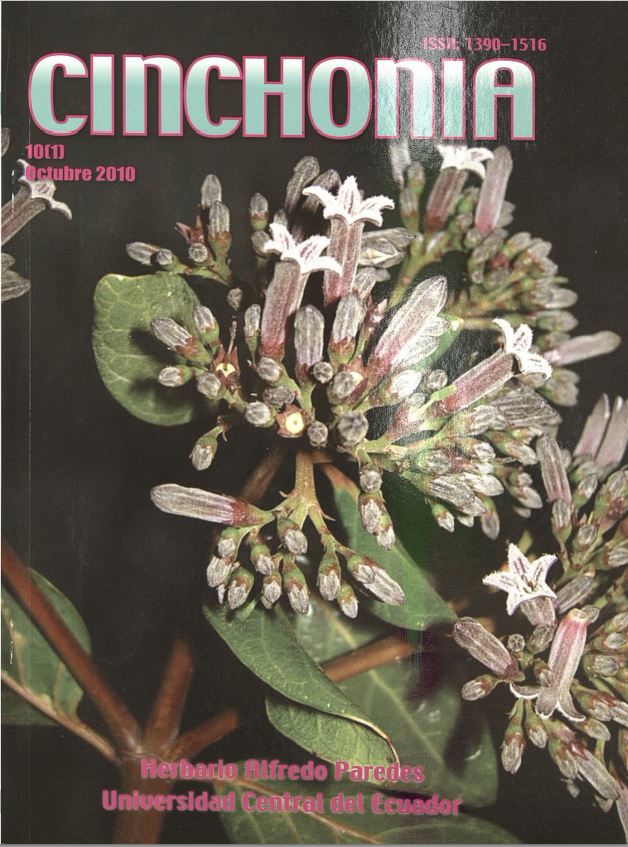LA DIVERSIDAD VEGETAL EN UNA GRADIENTE DE LA RESERVA ECOLÓGICA MACHE-CHINDUL, ECUADOR
Main Article Content
Abstract
The Balzar community and the Bilsa Biological station are located in the Mache Chmdul Ecological Reserve, within the provinces of Manabi and Esmeraldas; these two localities are connected by a horse trail which includes an altitudinal gradient of 175m-630m. The formation of the vegetation is: mountain base evergreen forest and low land evergreen forest. In December, 2007 and July, 2008; 10 localities were sampled, in each one 5 radial model transects of 50 x 4m, were established. The individuals counted were of a 2,5cm of DAP. and a herbarium sample was taken for every Individual in each transect. The sampled individuals were mounted, labeled and identified and they are in the QAP Herbarium: The data was analyzed by means of the Indexes of Simpson's Diversity and Sorensen’s Similarity. The average per 0.1 ha was 165 individuals and 55 species, the10 samplings total 249 species, 35 (14 %) were endemics; the interpretation of Diversity Index mainly corresponds to the diversity under the average; the Index of Similarity ranges were between 10.1 % and 46 %; the wide distribution species were: Otoba novogranatensis (Myristicaceae) is in 9 of 10 samplings, Salada macrantha (Hippocrateaceae) and Socratea exorrhiza (Arecaceae) in 8; there were also 4 species among the most frequent which repeat themselves in several samplings: Iriartea deltoidea (Arecaceae) found in 6 localities, Ossaea brenesii (Melastomataceae) in 5, and Prestoea decurrens (Arecaceae), S. macrantha, O. novogranatensis in 4. The state of conservation of the forests in the gradient varies between the mature forests and the disturbed principally due to selective logging. The endemic species are affected as well as the function that the foliar mass plays in the decrease of global warming. We have future opportunities of research in ecotourism among others. These should be priorities of the national and sectional governments, NGOs, and native and other people related to the area.

